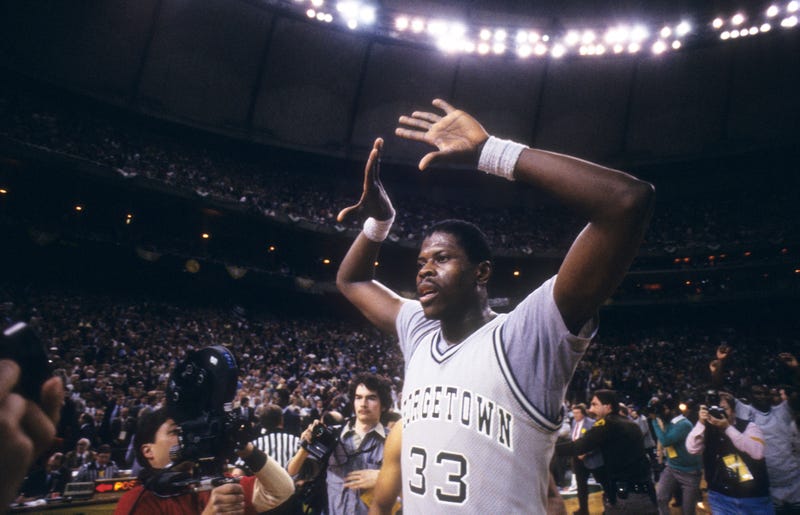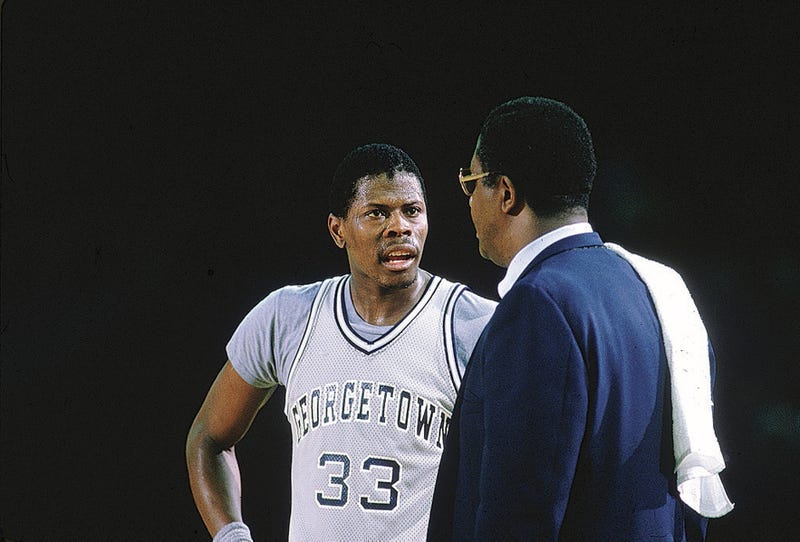
Patrick Ewing became a Hall of Fame basketball icon for his dominance with Georgetown and the New York Knicks. But he had a contentious relationship with the press, and wasn't always embraced by New Yorkers. Ewing could be aloof and combative, often irritated by and prickly toward fans and journalists. He sometimes felt unappreciated and assumed the media was out to get him.
The perception of Ewing as cold and uncooperative followed him throughout his playing career, and it may have been a factor in his inability to land an NBA head coaching job. But the seeds of distrust were planted during his teenage years, at Cambridge Rindge and Latin School in Massachusetts.
Ewing's coach at the time was Mike Jarvis, who later became the head coach at Boston University, George Washington, St. John's (NY), and Florida Atlantic. He witnessed the abuse Ewing took from opposing fans in the early 1980s.
"We had bricks thrown through the windows of our yellow school bus," Jarvis recently explained on the "New York Accent" podcast. "We had tires slashed. We had fights -- it seemed like in every game. There were fights in the stands. There were people at times dressing up in gorilla outfits and throwing banana peels on the floor. And it got really, really ugly when he chose Georgetown over Boston College."
Ewing was one of the greatest high school players ever, as he captured three straight Massachusetts state championships. And the ugly, disgusting racism he endured in Cambridge has motivated Jarvis to put pen to paper, and share their important stories.
"I wrote a screenplay that I'm hoping to someday have on a big screen about some of the trips we took," Jarvis revealed. "Whatever negativity [Ewing] was faced with, however, didn't seem to affect his greatness... The worse things got, the better he got. The more he got knocked down, the faster he got up. That's why there's only been one Patrick Ewing."
The circus that followed Ewing, who had immigrated from Jamaica at the age of 13, led him to distrust those outside his inner circle and avoid talking to the press.

"We would have to sometimes force him to conduct interviews and everyone in the world wanted to interview him." Jarvis revealed. "But when he did it, he ended up doing a great job."
Ewing was one of the most scrutinized players ever. "No matter what arena or gym we went into, we sold it out. I mean, including the Boston Garden," Jarvis explained. "So, you know, Patrick was a once-in-a-lifetime kind of player, and people really just had to see it. Needless to say, because of the racial tension that was going on around us, they sometimes carried over into the gym."
Ewing chose to play college ball at Georgetown, where its iconic head coach also viewed the media as the enemy. "As much as I respect John Thompson," Jarvis said, "I just wish maybe things had been handled a little bit differently when [Ewing] was in college, in terms of his media presence. There was a bit of a misconception -- he wasn't perceived as being the gentle giant he was."
On the court, Ewing was portrayed as an angry, standoffish, brooding player. Jarvis believes just a few strategically-chosen media opportunities could've changed that. "In high school we'd let Patrick know, 'Hey, here's something we really need you to interview with: The New York Times. Washington Post. Sports Illustrated. These are the reasons why," Jarvis said. "And I think once again, had a little different approach been taken [at Georgetown], people's perception of Patrick would've been entirely different."
Jarvis also thinks one of the first marketing campaigns Ewing did -- when he was drafted No. 1 overall by the Knicks back in 1985 -- was a mistake. "One of the first commercials they had him do was a sneaker commercial, and he was King Kong," Jarvis explained. "So it was leaked -- he was climbing the Empire State Building. And that was one of the worst things that could've happened to him, because it just once again fed into a lot of those stereotypes. He was anything but King Kong. He was a king on the court. He wasn't King Kong."
You can listen to the entire conversation about Ewing's basketball journey -- along with other stories told by Jarvis -- everywhere you get your podcasts, and on YouTube.
